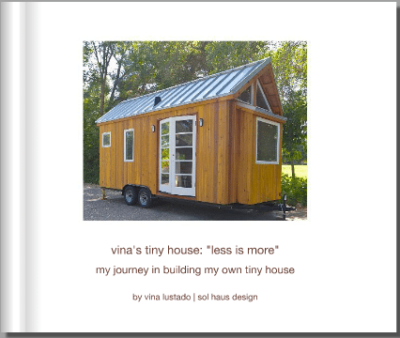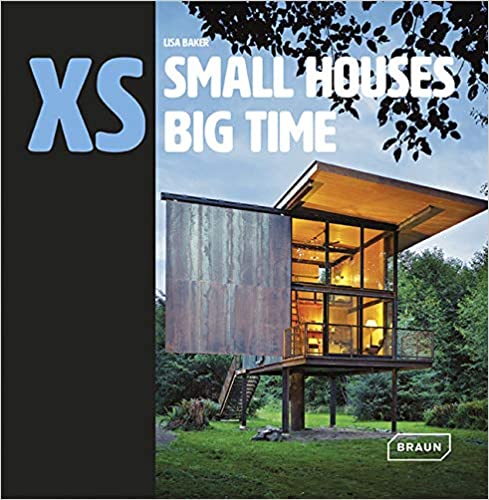BOOKS
Books featuring Vina Lustado & Her Tiny House

Vina’s Tiny House Photo Book
This book contains 69 pages of photos documenting the construction process from beginning to end, from the customization of the trailer to the installation of the hardwood floors. The book provides an excellent visual aid during construction.
Photo eBook
Available immediately for downloadThe photos are detailed and really give the viewer the essence of what it took to build one of the best designed tiny houses in the movement today.
A must-have companion purchased with the design plans!
In Her Purpose
This book features powerful stories of inspiring women who offer impactful and compelling successes. These are true stories that give us hope, courage, and drive. In Her Purpose creators, Rose Buado and Jennifer Redondo-Marquez introduce you to 40 amazing stories of strong Asian women who are redefining success on their own terms. Their stories give insights of how they got to where they are now. Each of these women has defied social and cultural conventions that have shaped our existence as we know it.
Hardcover Book
Including Shipping- Only ships to US addresses
- Personally signed by Vina Lustado

There is so much to learn from these women who came before us. Like these women, many of us struggle to find a career path, follow a life goal, and face different challenges, ups, and downs.
Vina Lustado shares her journey from living in the Philippines to immigrating to the US. She shares her story about living a simple life rooted in her native culture, traveling the world, to founding her own business in order to make a positive impact in the world.

Rising rents, the desire for a simpler life, the aim for sustainability, or the wish to posses a relocatable home: These are just a few reasons why the market for tiny houses has become increasingly popular in recent years. The “Tiny House Movement“ lifestyle trend, which began in the Unites States, has spread throughout the entire world driven by the construction and financial crisis.
XS – Small Houses Big Time
Vina’s Tiny House is published in a beautiful book! Thanks to Switzerland based Braun Publishing for including my house with the best small house designs in the world. Packed with more than 300 pages of full-color photos and architectural drawings, this is a handsome coffee table book for anyone looking for design inspiration for small spaces.
"XS - Small Houses Big Time"
In her chapter, Vina Lustado shares her story about her path to living tiny, from her childhood in the Philippines to finding home in 140 square feet in Ojai, CA
Index of Books



